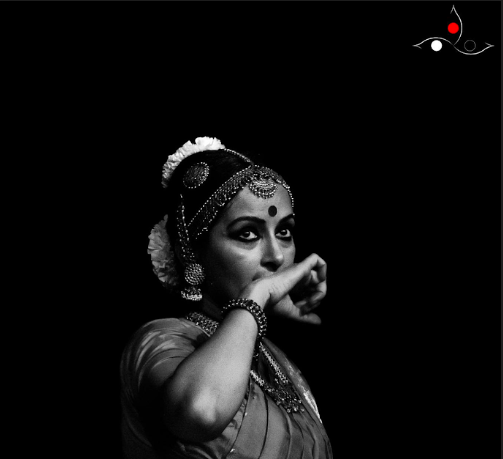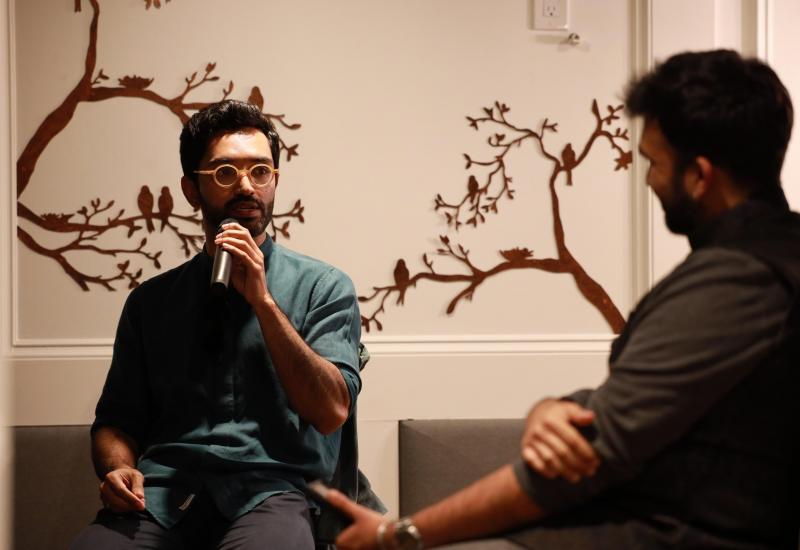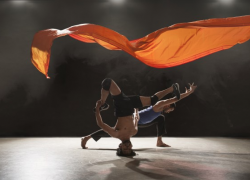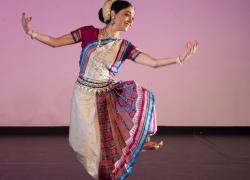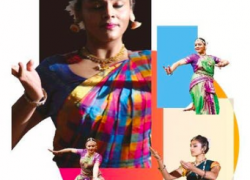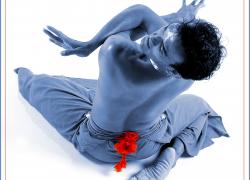Abhinaya - Beyond Binaries (Part three)
Nuanced abhinaya comes from the process of ‘inner dialogue’, bharatanatyam artist Vidhya Subramanian tells dancer and educator Kumudha Chandrasekaran.
Informed by technique, but driven by individuality; inspired by the content portrayed, but consumed within the music; guided by intelligent subtext, but surrendering to the spontaneity of the moment in dancing: abhinaya as delineated by Vidhya Subramanian, layered and lucid, mesmerises as much as it moves the viewer. An artist who has time and again been credited for an innate lasya or a deeply feminine approach to her dancing, Vidhya’s bold narratives are often nuanced by a vulnerable portrayal, transitioning between the qualities with a certain fluidity, bold and vulnerable; in this context free from a typical binary association with male and female prerogatives. In her recent performance in Krishna Gana in Chennai following her ‘Nritya Choodamani’ award, this idea of fluidity ran through the Viruttam, Varnam and her entire repertoire. In the final piece she integrated two concepts ‘Lila-Hava’, and ‘Ardhanari’ to further highlight a non-binary fluidity. In ‘Lila-Hava’, a concept in the iconography of Krishna, Vidhya’s portrayal started with identifiable images of Krishna and Radha exchanging clothes and ornaments. She then drew the viewer into a moment of union, when Krishna smells Radha’s hair while dressing her up as him (Krishna), and transfers his tilak onto her forehead by bringing their faces together, both equally vulnerable, losing themselves in each other.
In the first two parts of this series – ‘Abhinaya - Beyond Binaries’, a recurring point in conversation with Narthaki Nataraj, Mavin Khoo and Vidhya Subramanian was the mind-body connection in abhinaya. As one of the few artists whose thought and performance are in a continuum that is tangible, Vidhya’s explanation about the mind and the body forms a foundation for her further ideas on abhinaya in terms of subtext, evolution of a piece of work and technique. She spoke of the body as an extension of the mind, connecting the intangible and tangible: the mind as a vessel for generation of dialogue, subtext, ideas, and the body as the vessel for the communication of dialogue, subtext, ideas. 'In the mind, an idea is merely a thought to be accepted or rejected. Once expressed by the body, it is out there, it cannot be taken back. It then has to be accepted or rejected by the artist, by the spectator, by time,’ she added.
Vidhya traced through the trajectory of her relationship with abhinaya over the years, from a past where there was a conformation of the self to the demand of the dancer, to the present, where the intersection between the self and the dancer is a constant. She spoke of the letting-go of a comfort zone, in finding possibilities beyond a typical coy and modest nayika for example. On the other hand, she spoke of a curve from a point A to point B in movement, an aesthetic from the technique associated with the Vazhuvoor bani (style), that would not leave her, and how she stopped fighting and started owning it. Above and beyond these choices, she pointed out that the connection of the mind and the body with the spirit causes the technique to disappear, and that it has taken a good forty years for her to get there.
We spoke about intention, authenticity, and the need for negotiation to bring individuality into the subtext of abhinaya. The subtext of original, authentic abhinaya comes from an individual, multi-sensorial imagination and interpretation of the subject being portrayed. Vidhya’s subtext runs parallel to the central idea, like the chords that harmonise and augment the melody, with their own crests and troughs, that converge on a beautiful note to create meaning and magic. 'Kalanidhi mami taught me how to think for myself, how to draw from life and the process of inner dialogue. Subtext then effectively authenticates the metaphor in the artist's mind, so that it is communicated with conviction. Where there is authenticity and conviction, there is relevance’, she shared. Recollecting some specific moments in abhinaya she said 'I have called out Krishna's name when doing a ‘Sakhi He’. I have laughed in delight at a sudden unexpected idea. I have been frustrated at the elusive connection between thought and action. And there are many more moments’.
The three parts of this series – ‘Abhinaya - Beyond Binaries’, started with the ambiguity of the term and the apparent statelessness of a non-binary stance, and looked at specifics in terms of building skill, subtext, metaphor, authenticity, and artistry. The intent, in line with ‘carrying forward’, a universal meaning that the word abhinaya holds, is a direction that does not see binaries as two divergent ends, but as two possibilities that are equally potent.
Kumudha Chandrasekaran
Kumudha Chandrasekaran is a dancer, educator, and writer from the Temple of Fine Arts. Rooted in bharatanatyam, her practice embraces her exposure to different vocabularies in dance. She believes in inclusion and has headed a project catering to about 200 children at Spastics Society of Karnataka, that created an access for them to music and dance. She co-curates a performance series ‘Yati Gati’, that focuses on the dialogue between the artist and the audience, at Atta Galatta, a cultural hub in Bengaluru. Across her engagement with the arts, her work takes a non-binary stance, connecting the thinking and doing in dance. She holds a master’s degree in dance education from the Royal Academy of Dance, London.

